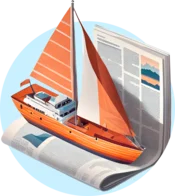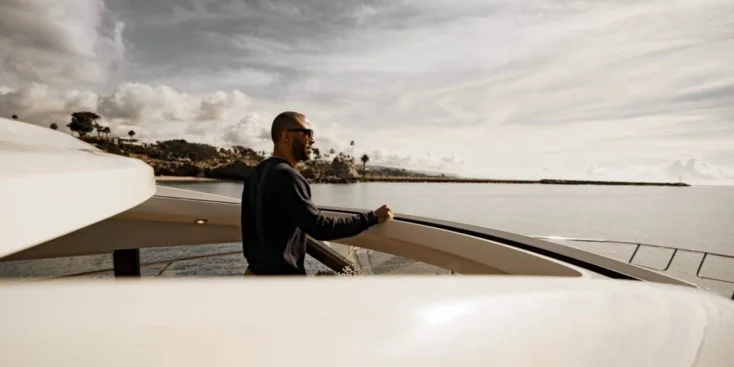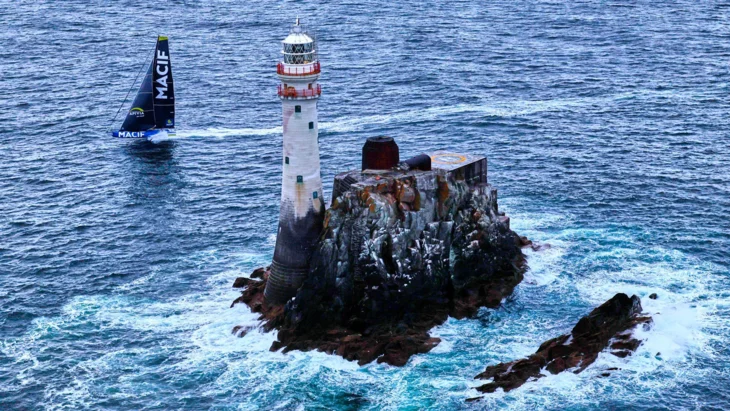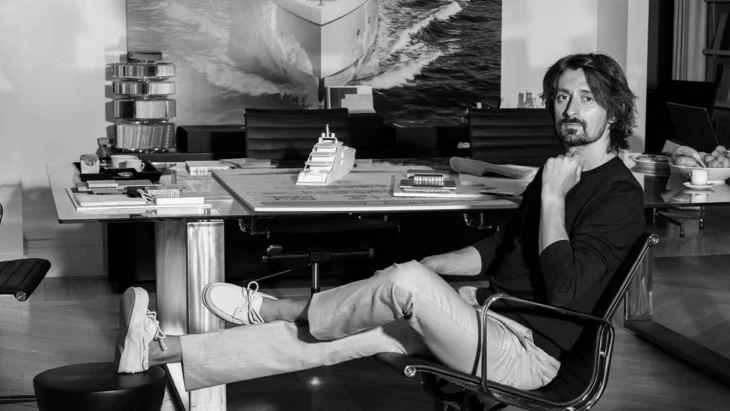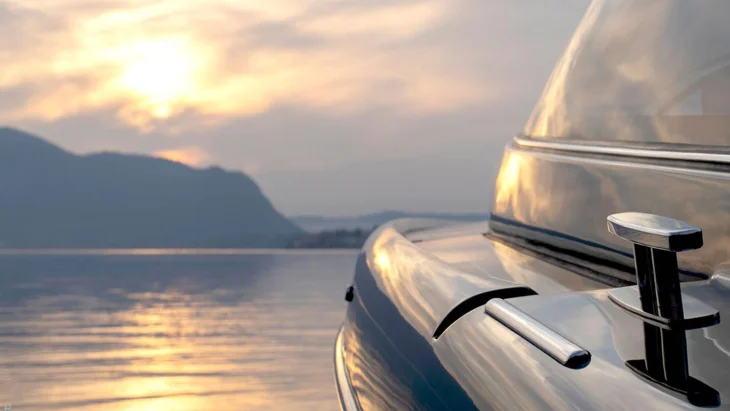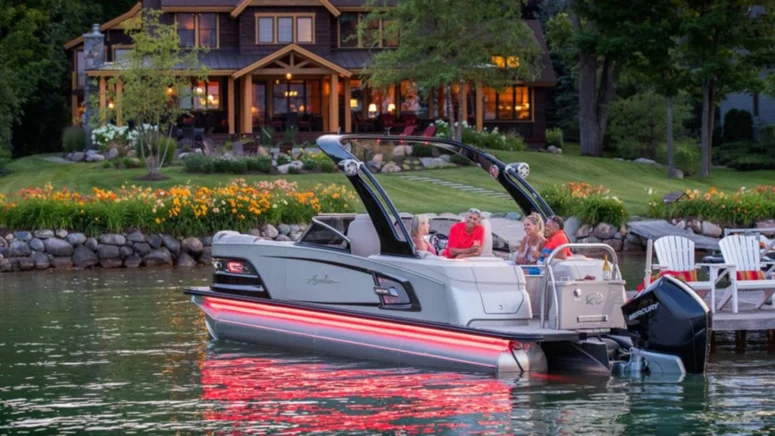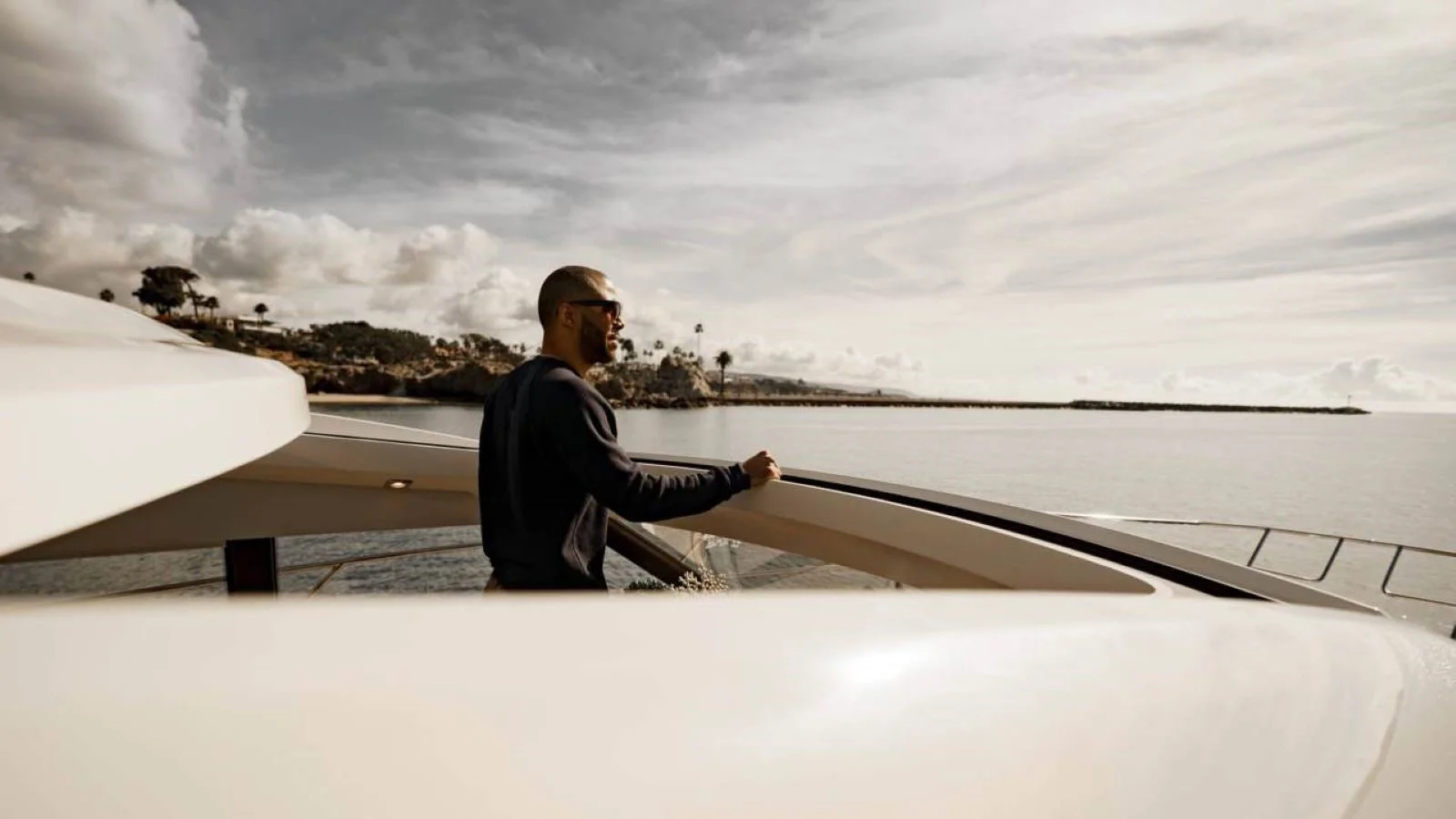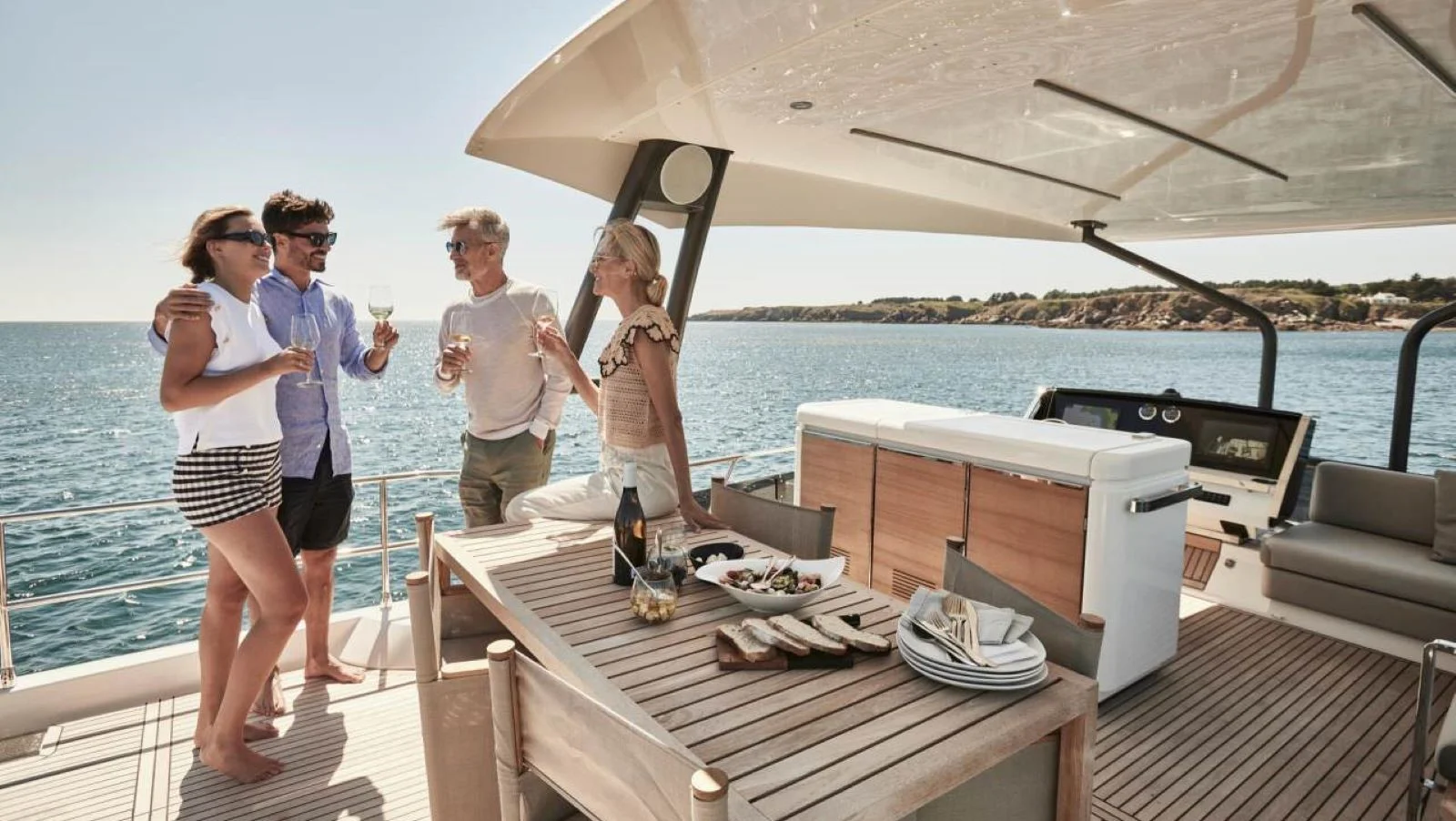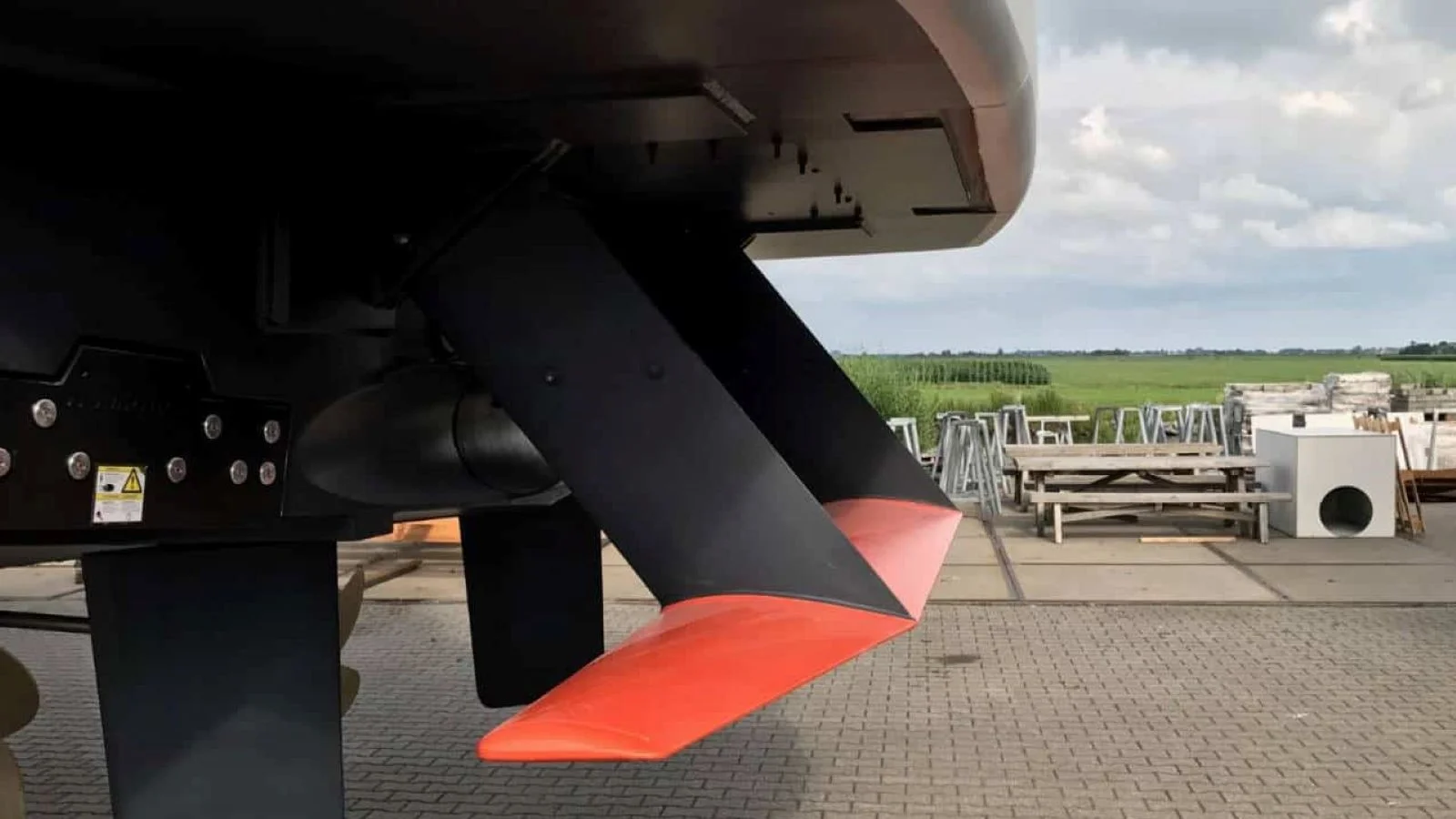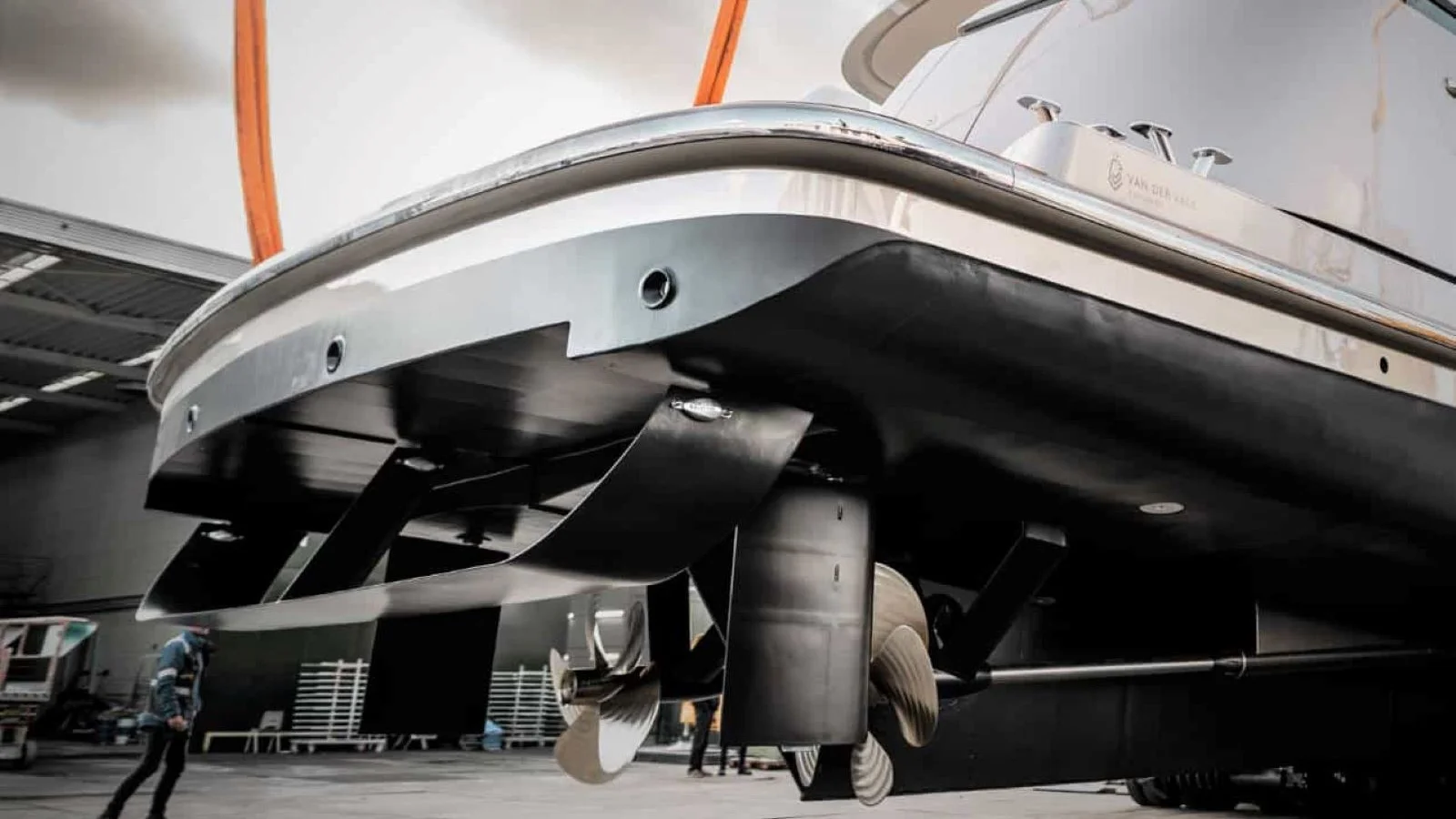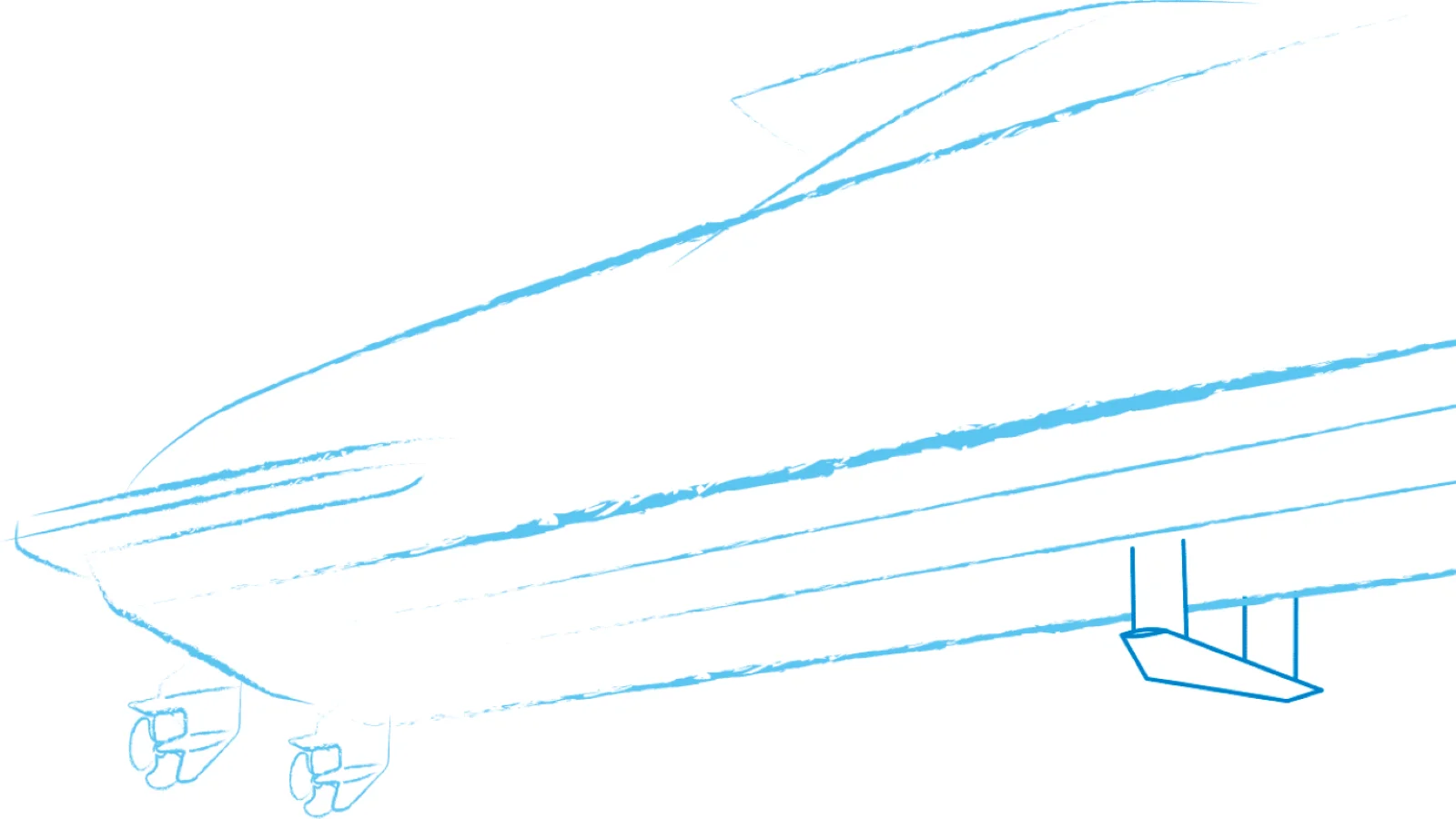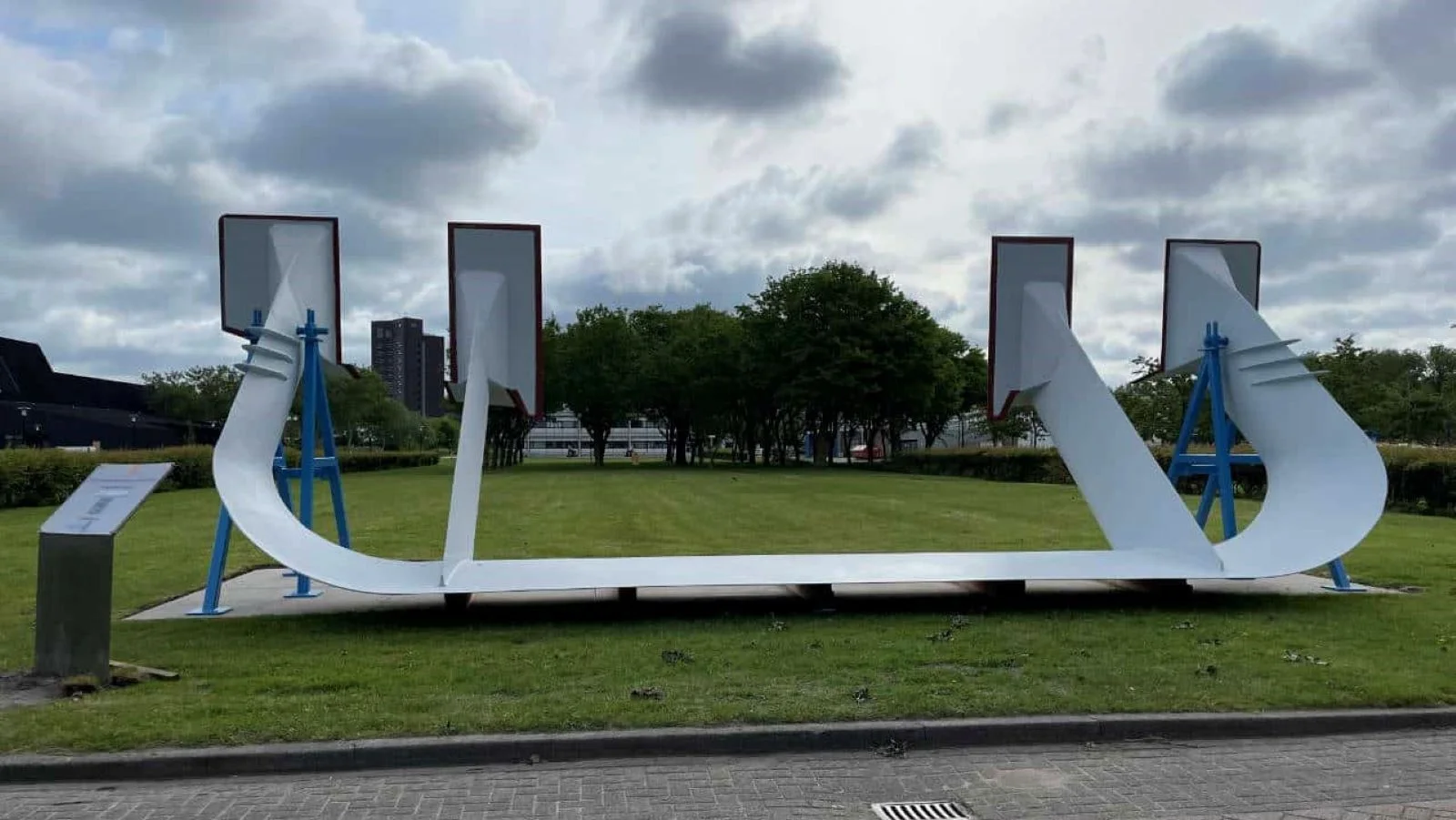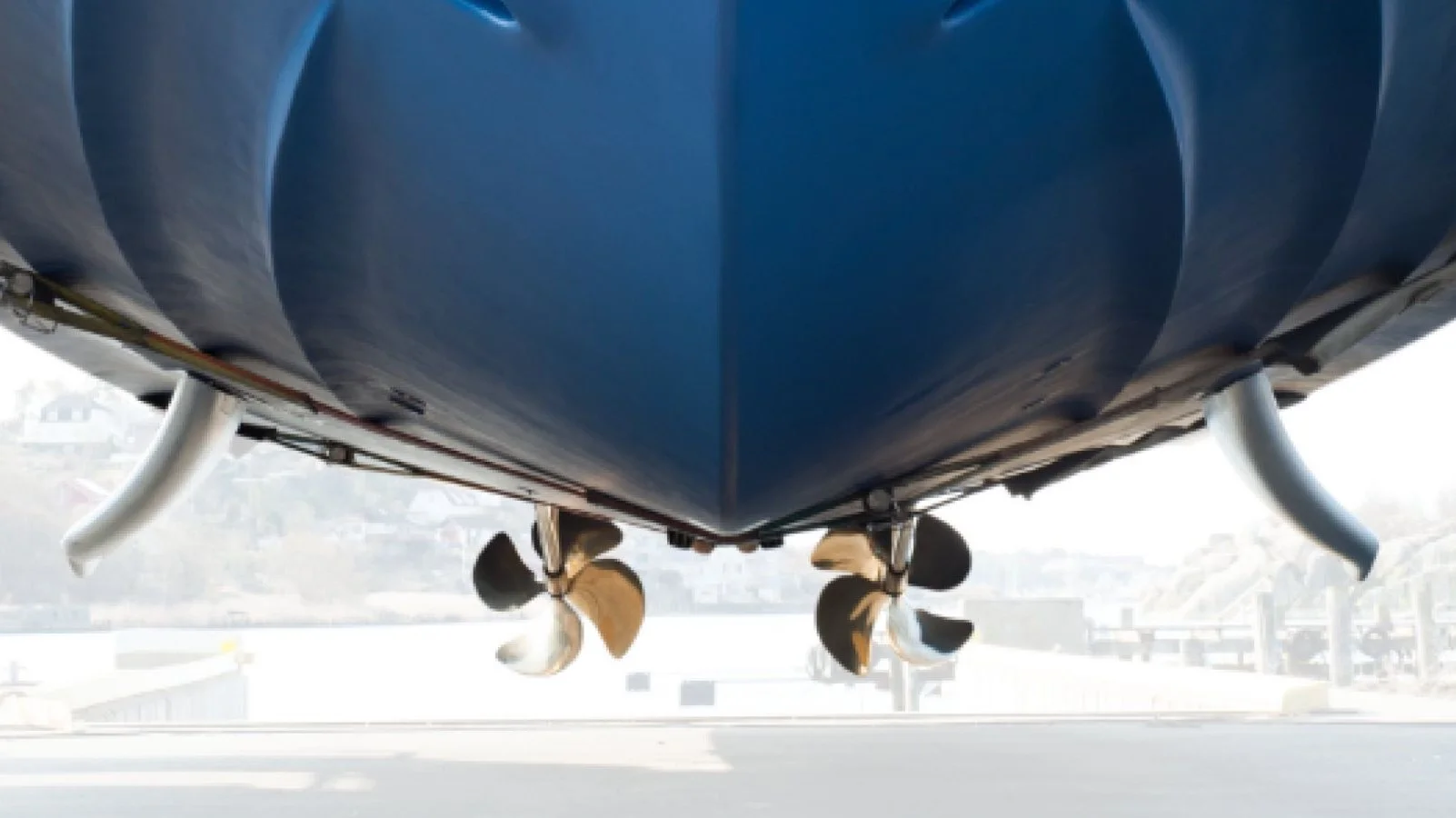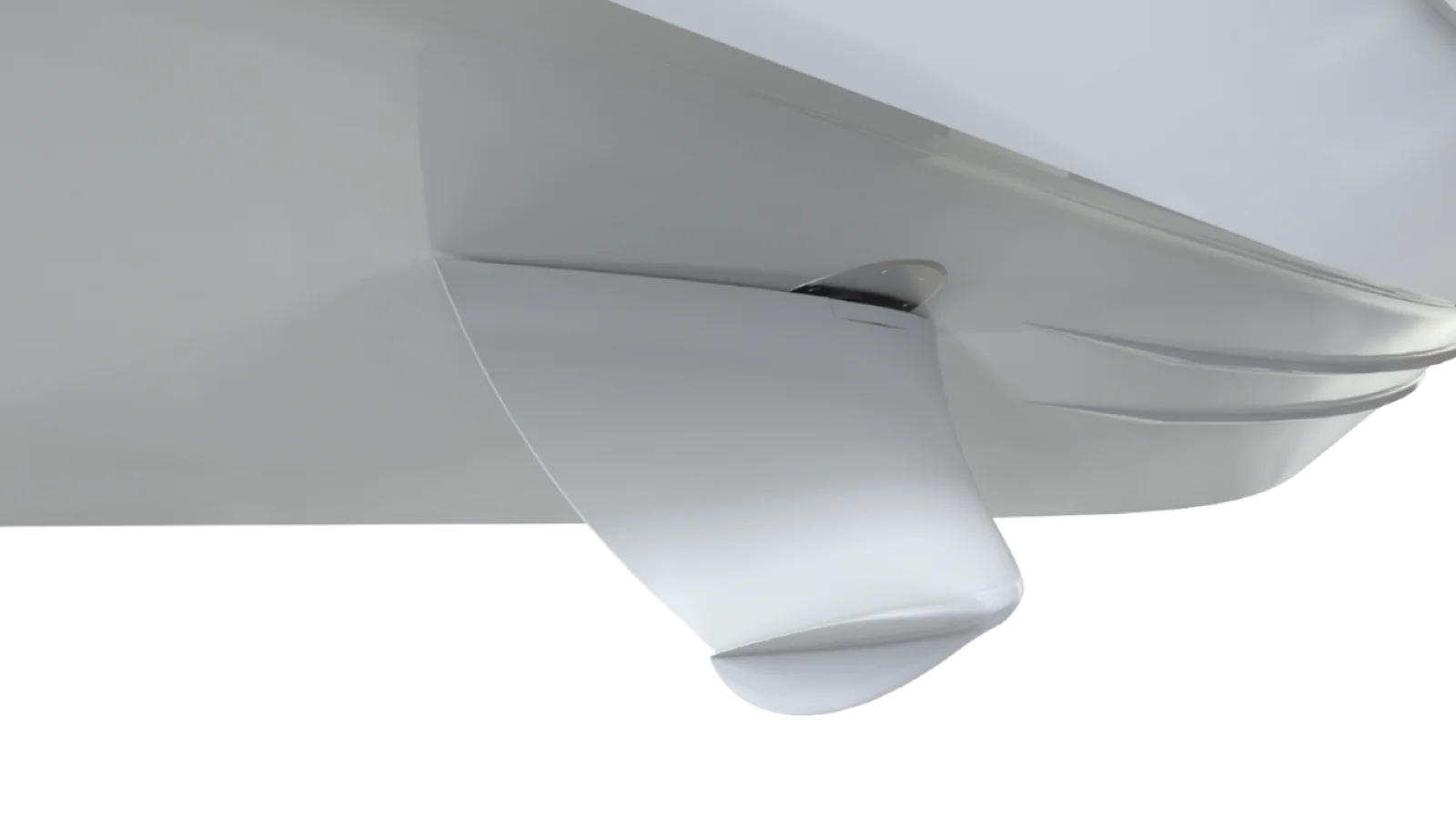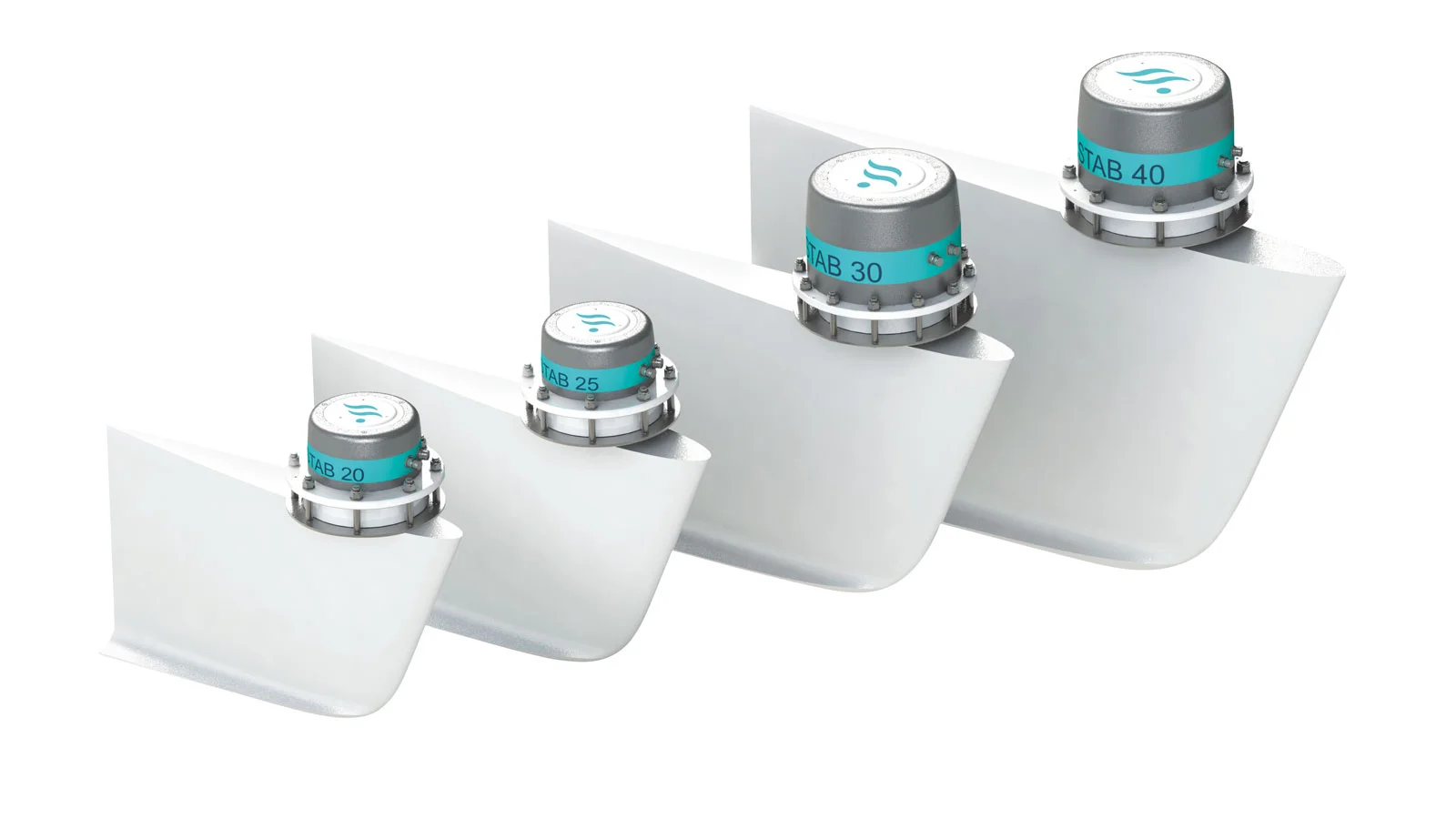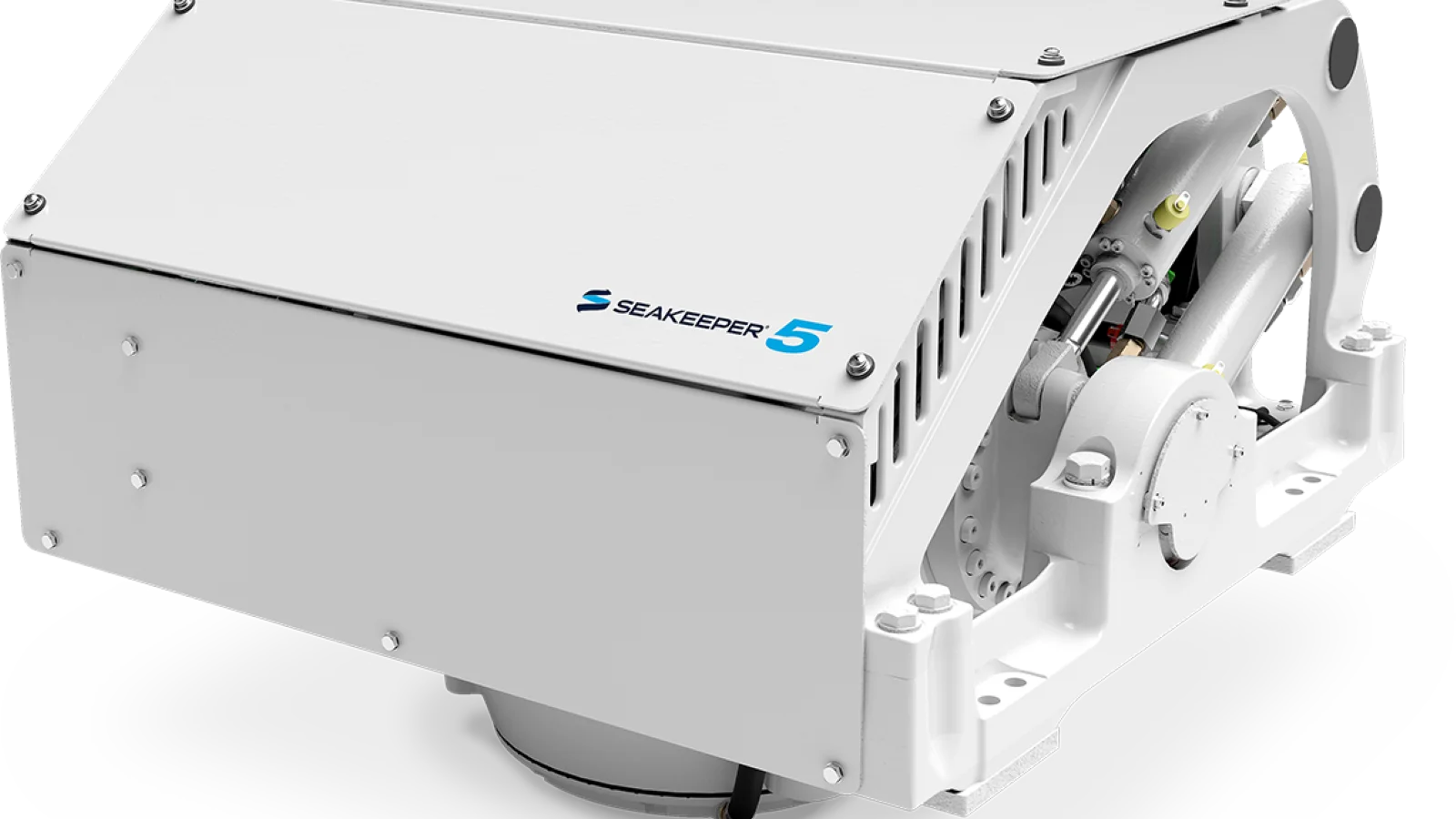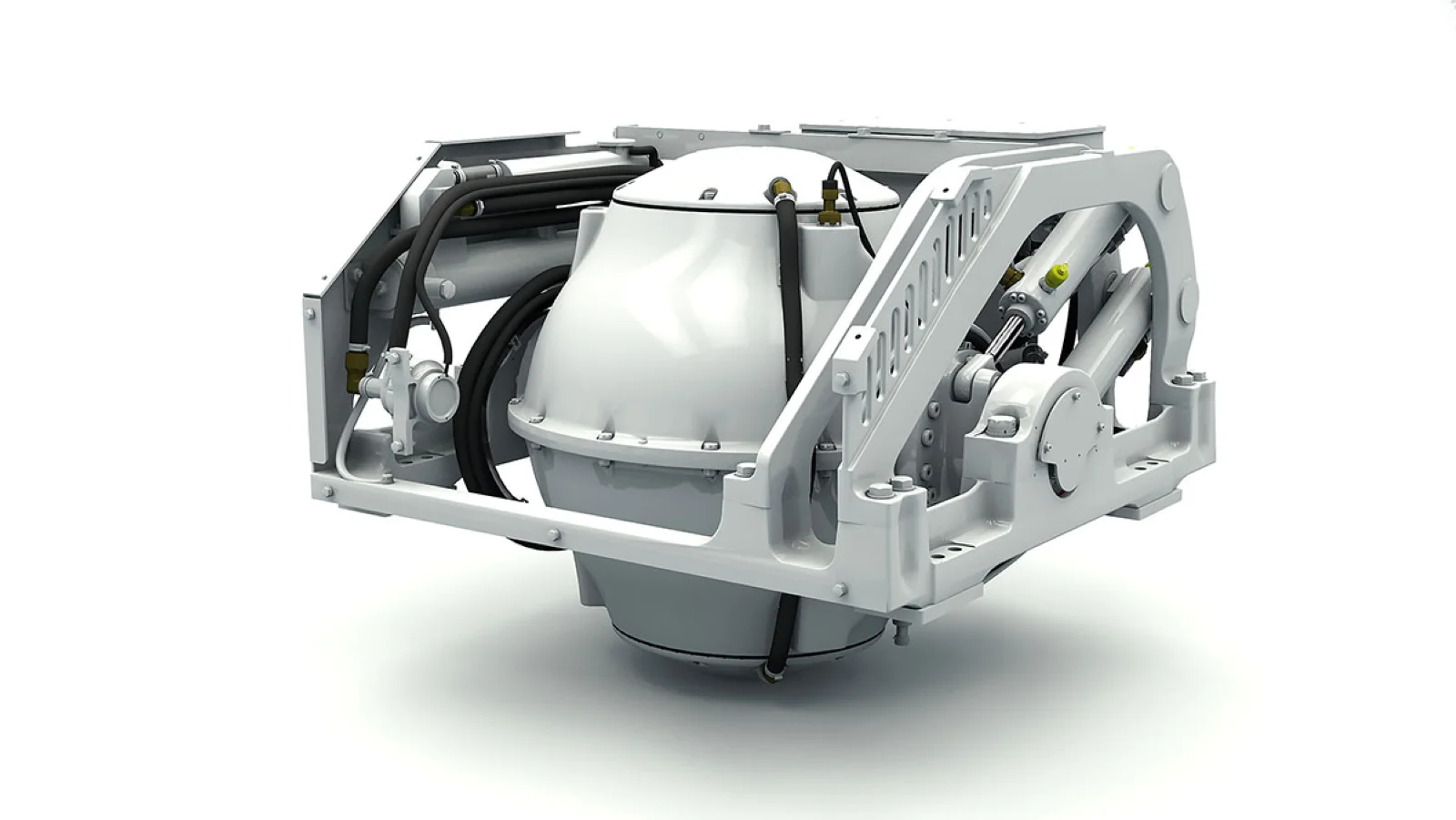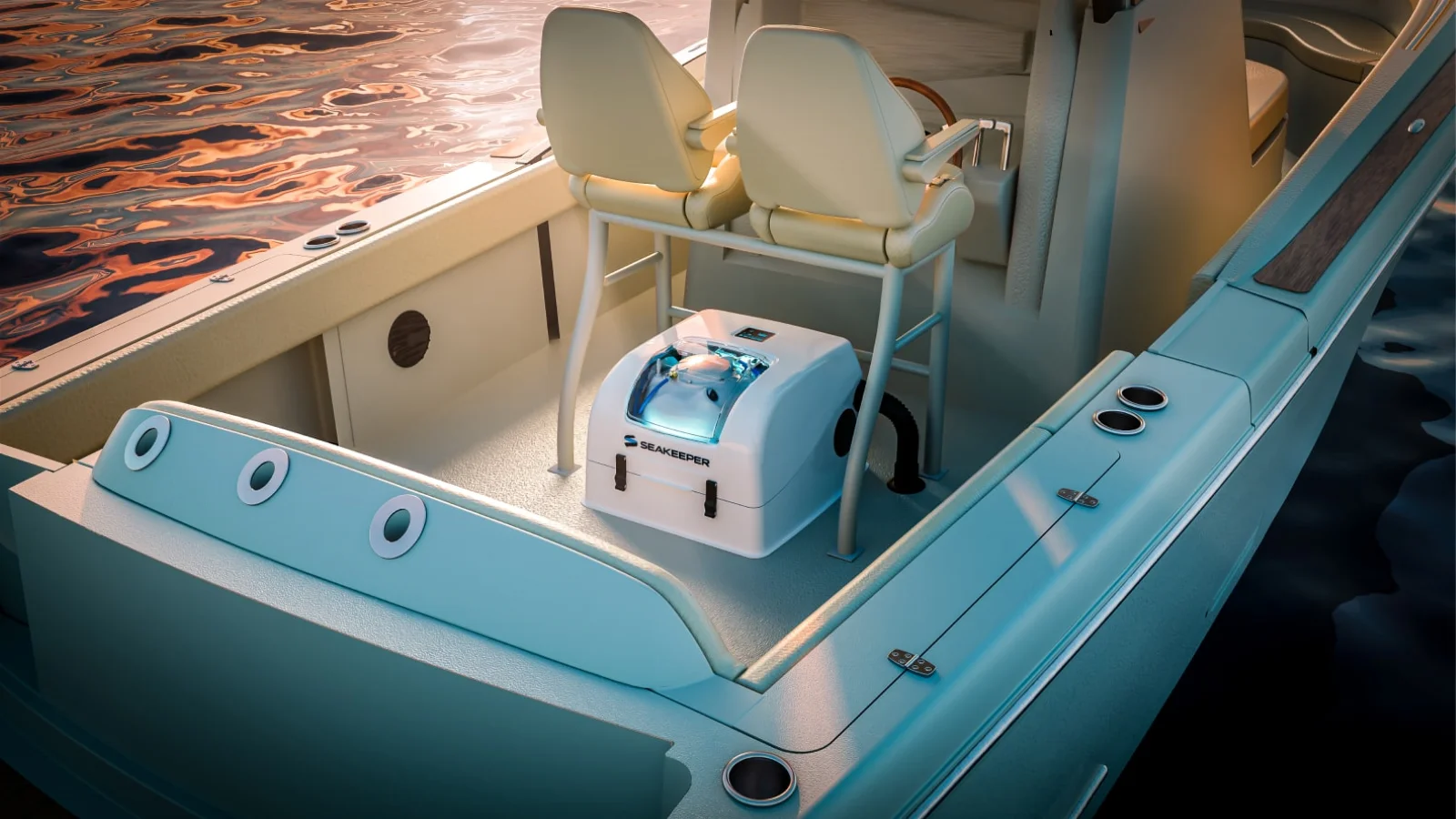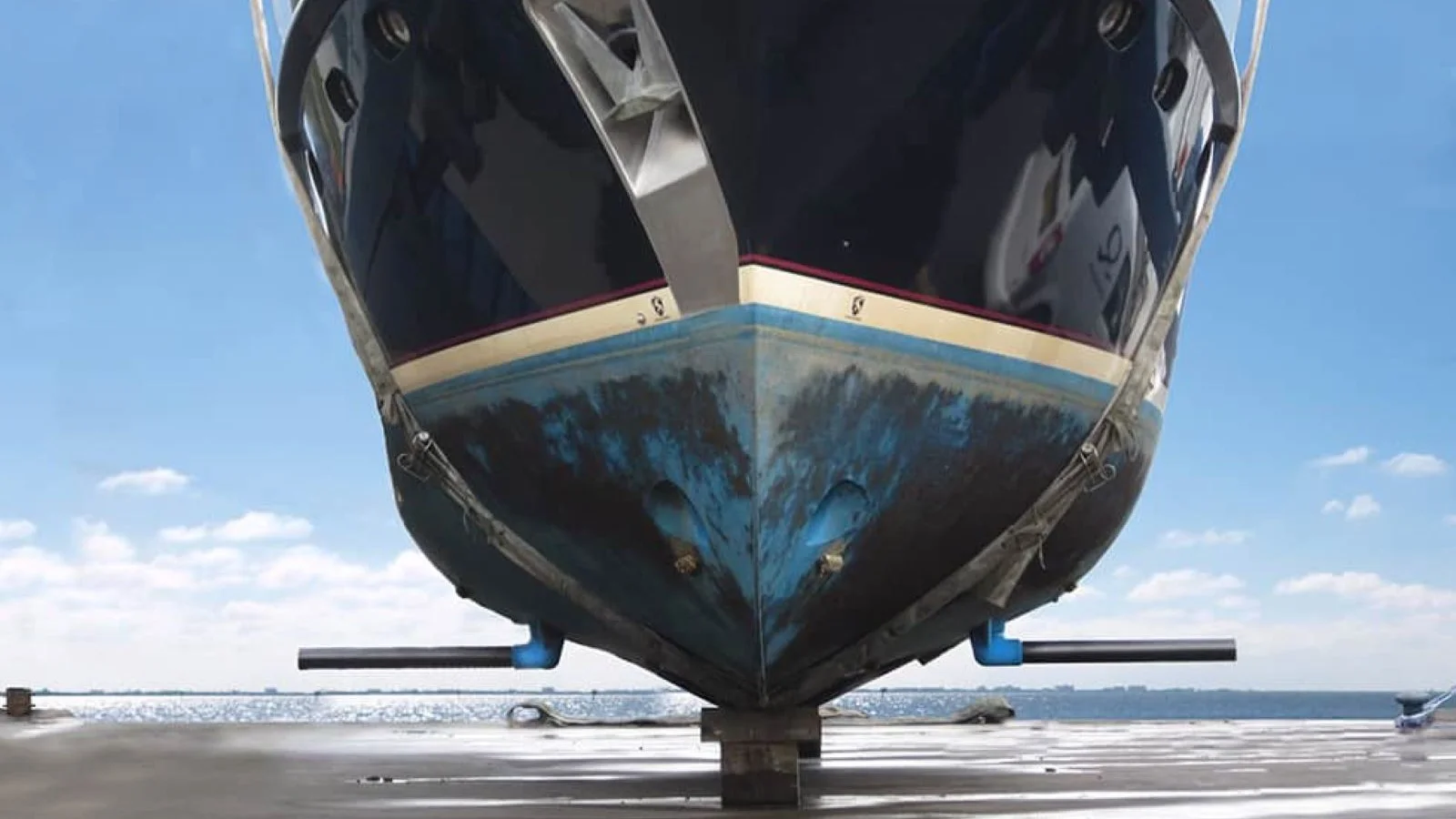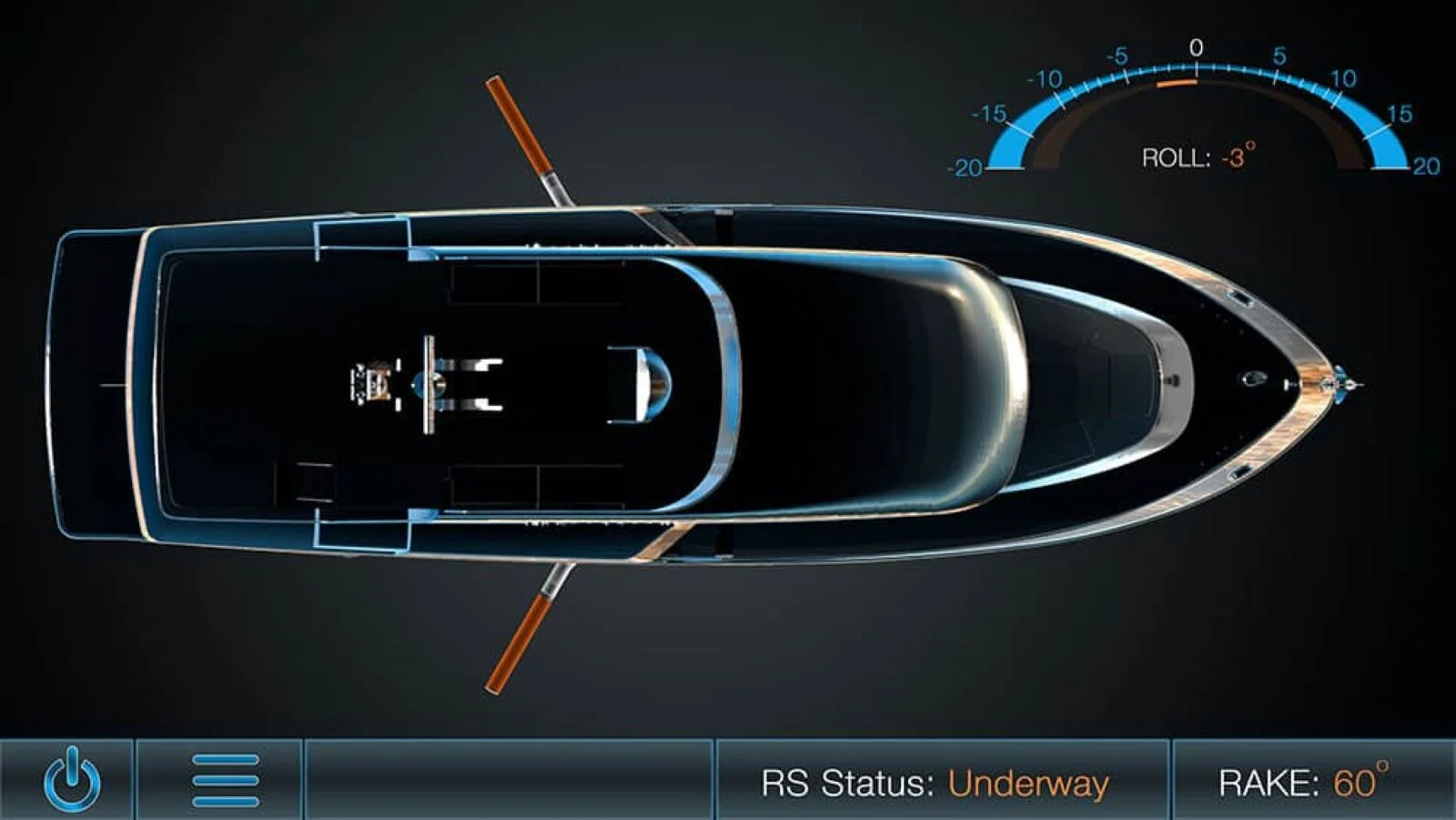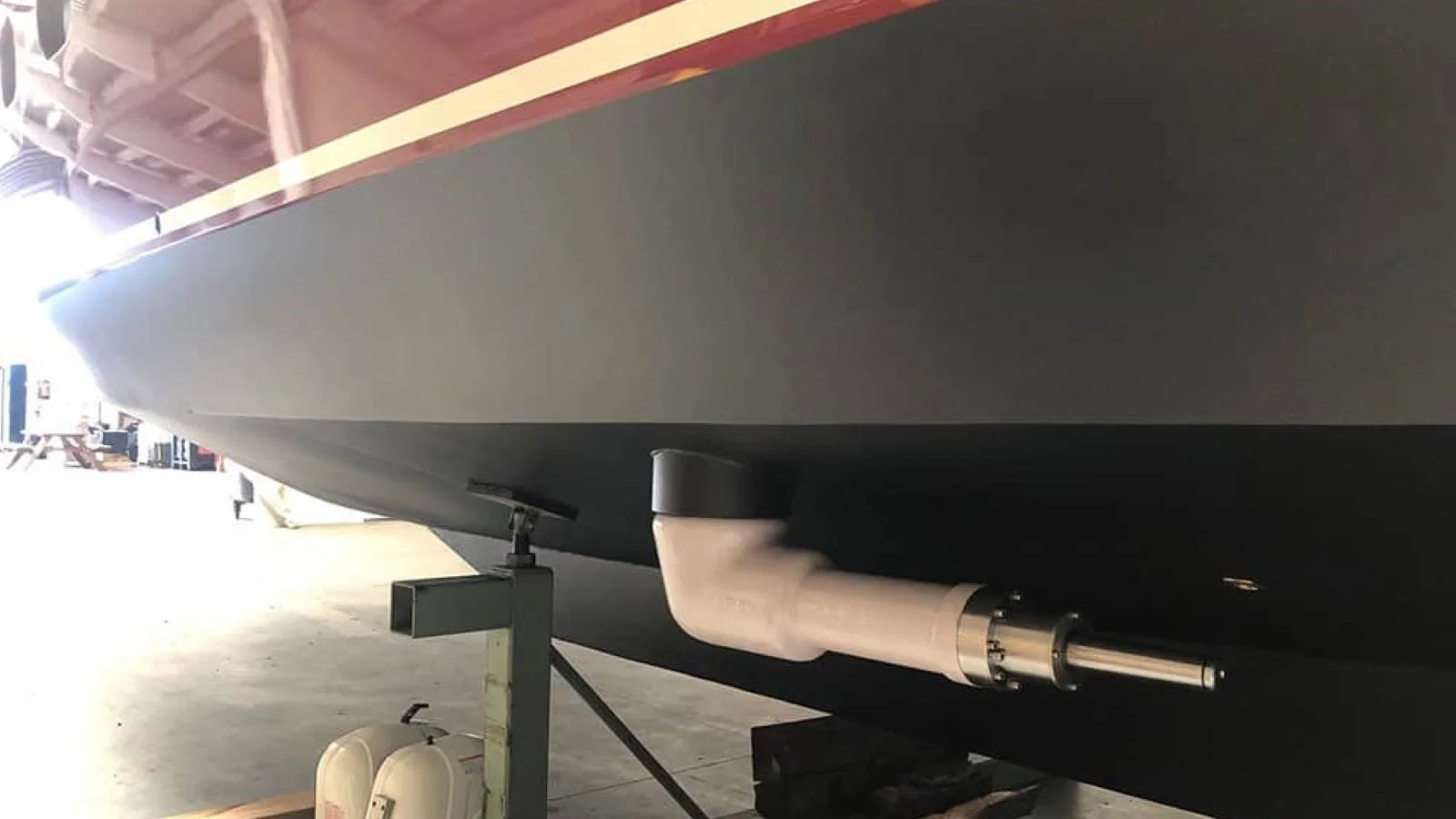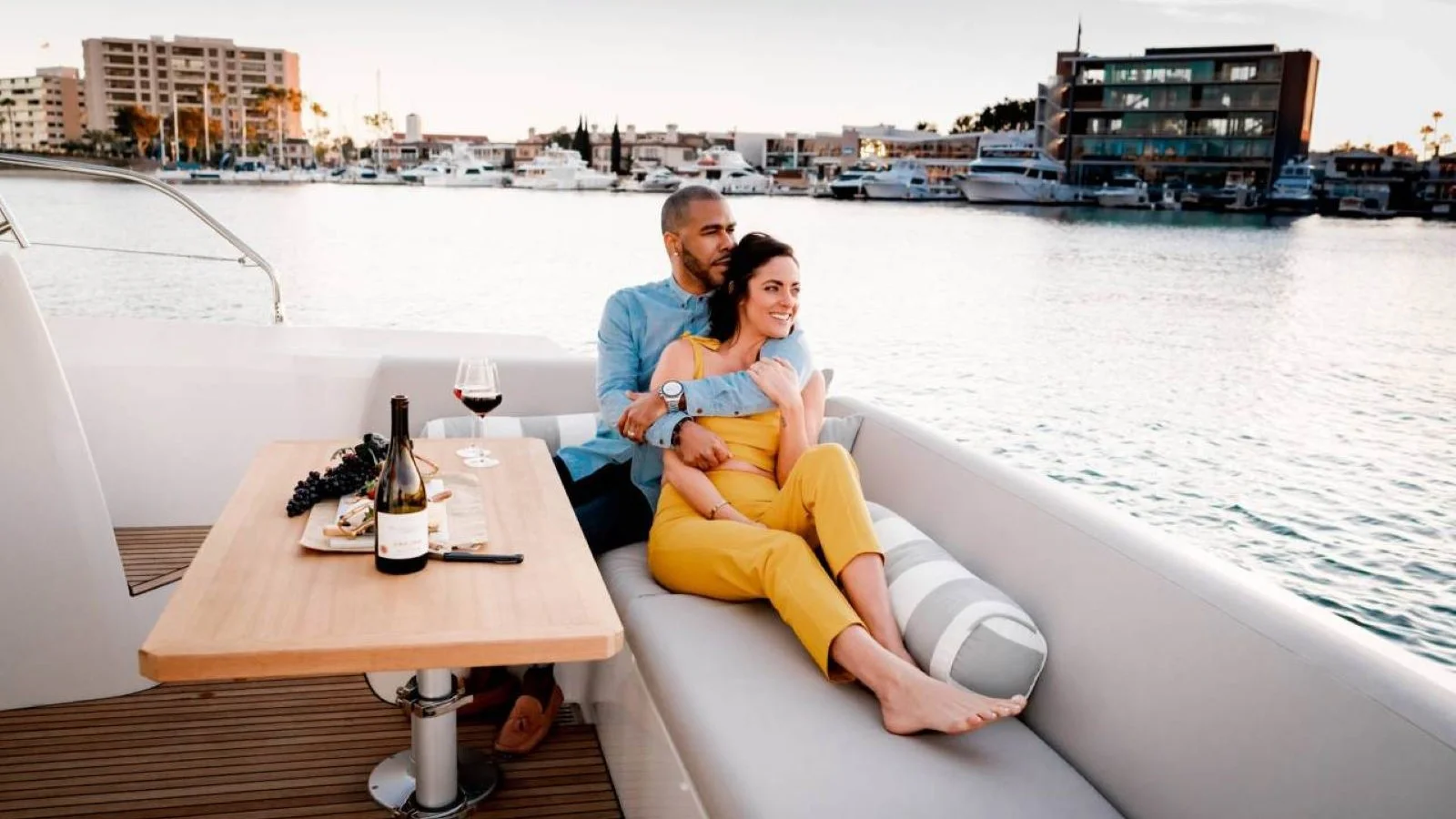How to beat seasickness? Everything about different types of yacht stabilisers
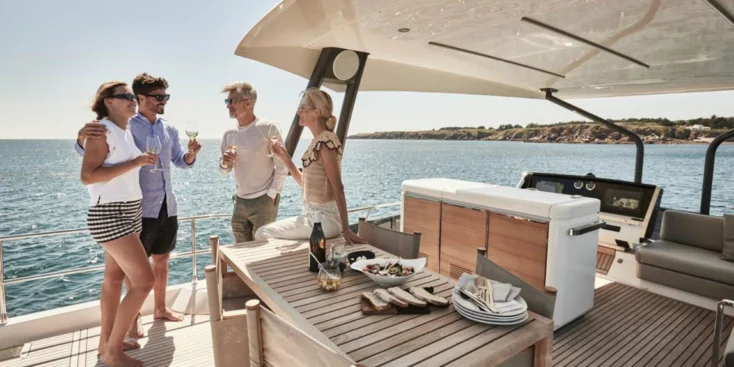
Statistically, only 5 to 10% of people never get seasick
All the rest are more or less prone to motion sickness, and not only on board vessels, but other kinds of transport, too. Oddly enough, there are plenty of them among sailors and yachtsmen. It’s just that their love of the sea seems to outweigh any unpleasant sensations.
Most people get less seasick after a couple of days at sea. And if you go out on the water regularly, with practice the body will adapt, and you’ll get seasick in really bad weather only. In this case it’s better to be on the deck and look at the horizon, which will serve as a “firm spot” for your vestibular system.
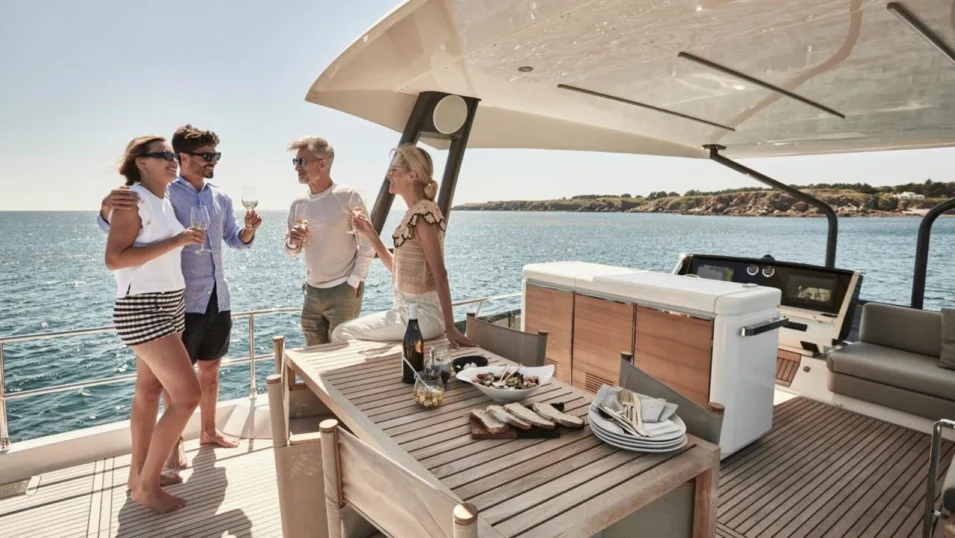
However, there are some sufferers who can’t adapt to pitching at all. Like, for instance, Admiral Nelson, who, having spent most of his life at sea, always suffered from seasickness and had to save himself with ginger root. There are other folk remedies like rum, lemon, deep sleep. Medicine also offers different kinds of pills and acupuncture bracelets…
We promise to devote a separate article to different ways of beating seasickness one day, but this time we are going to talk about a far more efficient solution: yacht stabilisers. Let’s make it clear from the start that we are not going to delve into the jungle of technical details, but try explaining it all in very simple terms that even newbies can understand.
What kind of yacht stabilisers are there?
There are very different kinds of them. One can find and install the right option for almost any yacht or even a small boat. First of all, stabilisers are divided into passive and active. Besides, stabilising a vessel underway and at anchor are two different tasks that different stabilisers handle differently.
Passive stabilisers
These include all kinds of fixed (stationary) wings, skegs and bilge keels that make the hull more stable on the water. The thing is a yacht does not only pitch up and down or roll from one side to the other, but also corkscrews, when the bow’s movement to the left or to the right forces the yacht to make complex spiral movements known as yawing.
Passive stabilisers reduce the amplitude of pitching and yawing, allowing the vessel to stay on course more stably, but they work even more effectively in conjunction with active stabilisers, complementing their capabilities. The disadvantages one could mention include the fact that sometimes such solutions affect the controllability of a vessel, increase drag, reducing speed and increasing fuel consumption.
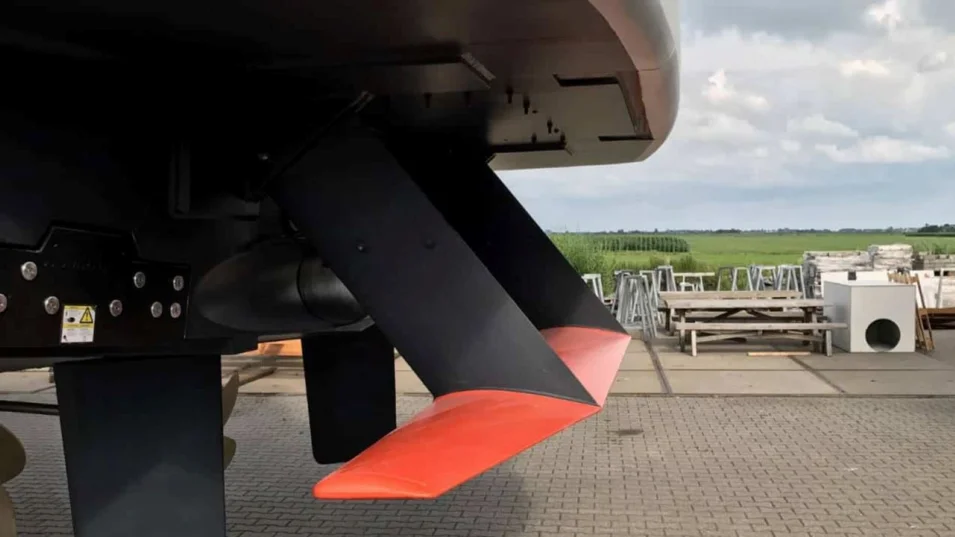
However, sometimes it can be the other way around. For example, the patented Hull Vane, which is a fixed wing by the Dutch manufacturer of the same name, was developed not only for comfort on board, but also to save fuel while increasing speed by improving directional stability and reducing drag.
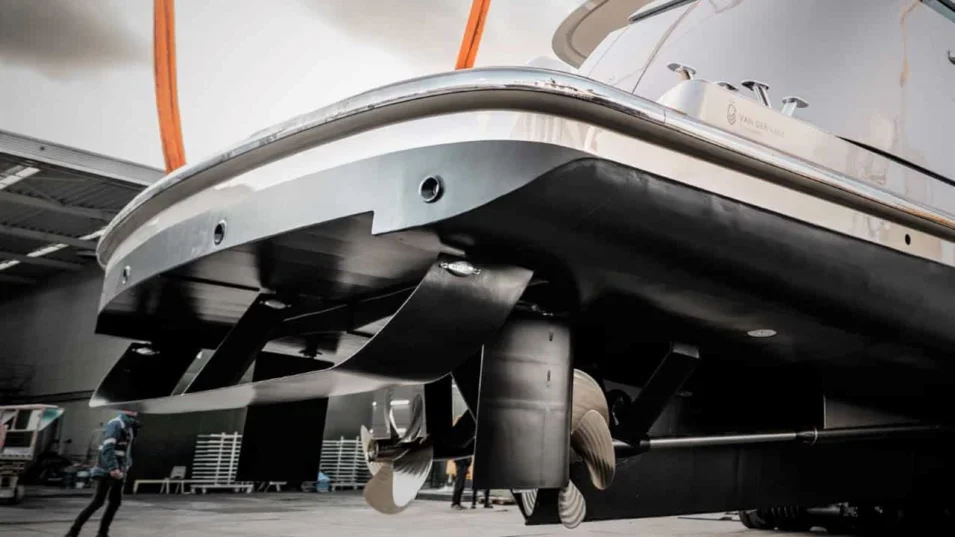
Hull Vane is installed on yachts of 10 to 100+ m and may have various shapes and be custom-designed and optimised for particular yachts, conditions and objectives. Hull Vane can often be seen on board the displacement and semi-displacement yachts by such Dutch shipyards as Van der Valk, Hakvoort, Sturiër, Linssen.
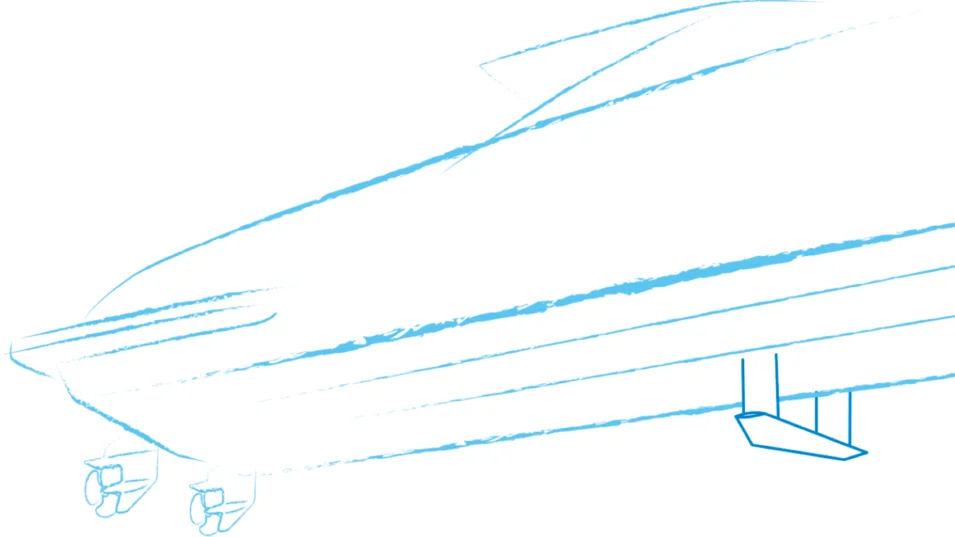
However, there are solutions for performance vessels, too, when the wing is attached not to the stern, but amidships, and its position and design are calculated individually for a necessary speed range.
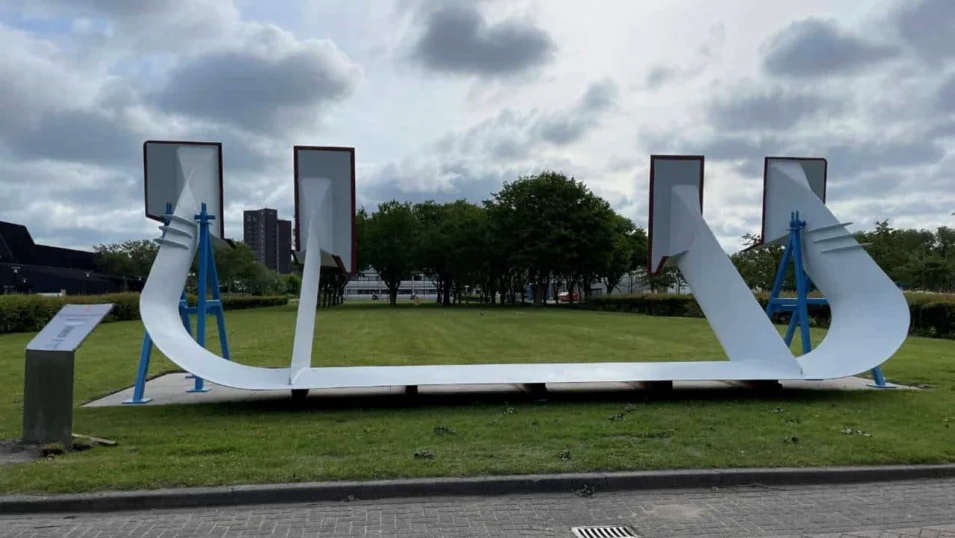
Besides, Hull Vane can be retractable (to reduce draft) and even dynamic, which means capable of changing the angle depending on the conditions. But this modification refers to a completely different segment of active stabilisers that we are going to discuss later.
STRENGTHS:
- Cost-effective
- They don’t take up much space
- They don’t need a source of energy for operation
WEAKNESSES:
- They are normally used for rather slow displacement and semi-displacement vessels (although there are some exceptions)
- Depending on the configuration, they can affect speed and fuel consumption
Active stabilisers
This is a series of devices that are not just part of the hull, but are capable of performing movements independently to suppress motion, and therefore require a source of energy.
Fin stabilisers
They do look like fish fins. And their shape ensures minimal drag when the yacht is going forward, but maximum effect when she is moving from side to side.
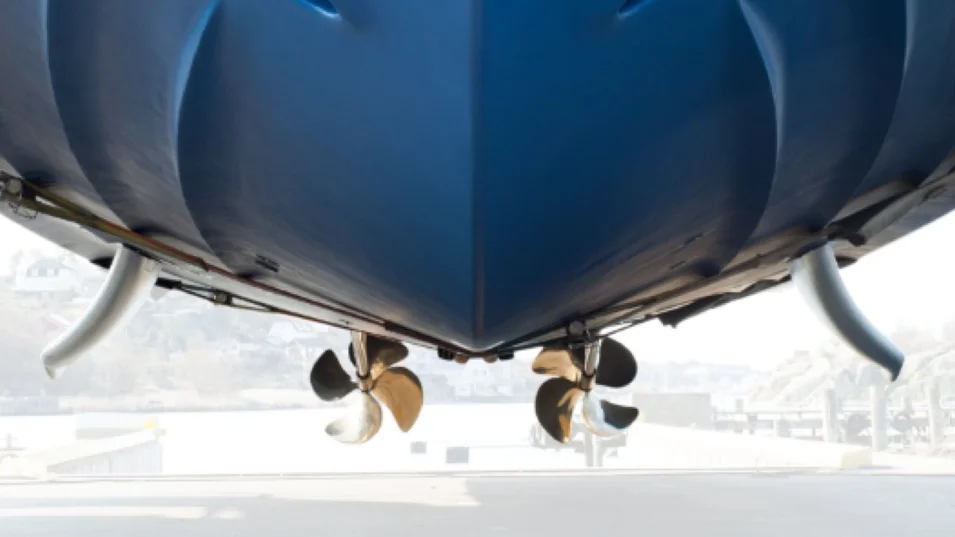
Depending on the size of the yacht, one or two couples of fins like this are fitted under the hull amidships. The fins respond to the sensors that measure the roll of the vessel immediately, providing a force that is equal and opposite. They can be powered by a hydraulic or electric drive.
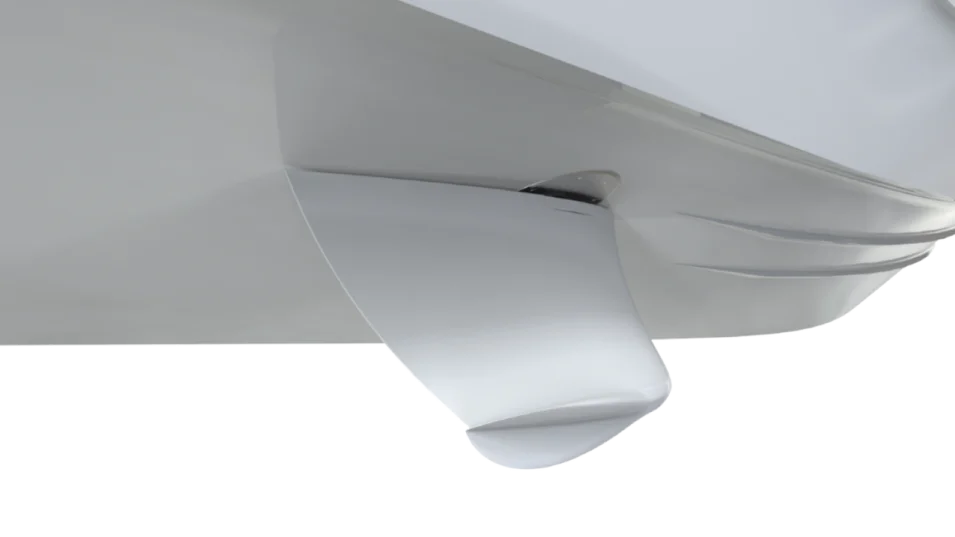
Electric fins are getting more and more popular. The pioneer in the field is Italian CMC Marine, which was the first to create quite a reliable electric construction.
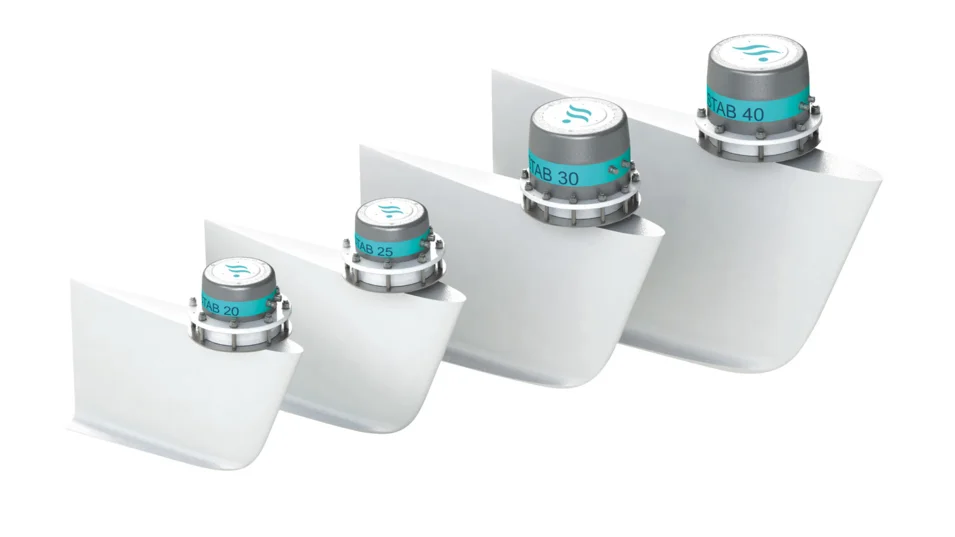
Electric fin stabilisers have a number of advantages over hydraulic ones: they are cheaper, easier to mount and less noisy. The components of an electric system are more compact, which means they take up less of precious space in the hull. Finally, the electric drive does not require laying hydraulic pipelines and eliminates the possibility of spilling oil used in hydraulic systems.
Many of the fins are meant for stabilising a vessel only when it is underway. To stabilise it in a static position, for example, at anchor, they have to work differently. This issue is addressed in different ways: they change the shape and area of the fins, extend additional blades; use the same fins, but in a different mode; install additional fins designed specifically for “zero speed”, combine various stabilising systems, etc.
STRENGTHS:
- Very efficient underway
WEAKNESSES:
- Like everything protruding from the hull, they are vulnerable to damage from floating and underwater objects
Gyro stabilisers
This kind of stabilisers looks like a sealed box, where there is a rotor inside spinning in a vacuum at very high speeds. A gyro is a “self-levelling” system, striving to maintain its position counteracting the forces that make the yacht roll. Gyros are most efficient at anchor, but they make life considerably easier underway, too.
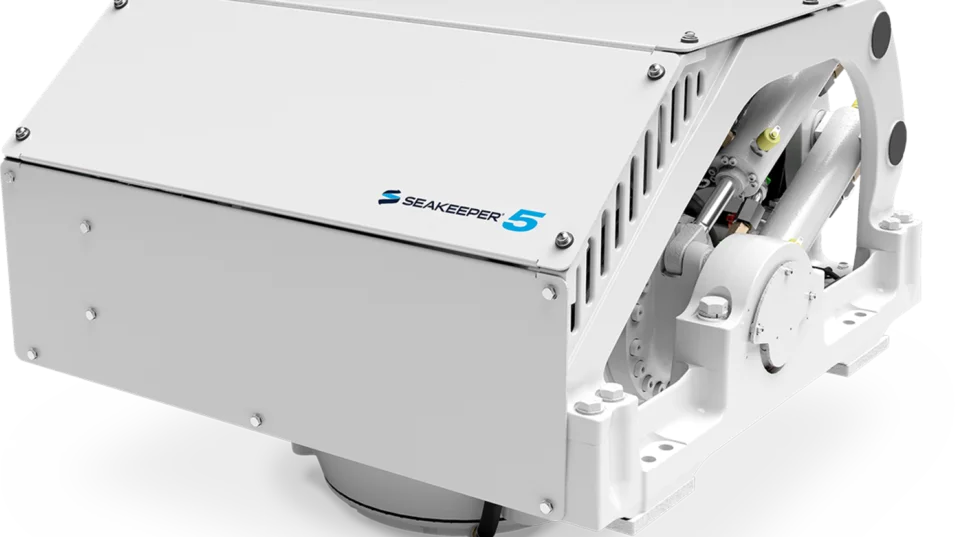
Gyro stabilisers are really wide-spread in modern yachting industry, and there are lots of manufacturers, with Seakeeper being the undisputed leader. Although they have their advantages and disadvantages, too. One of their pros is that the variety of models allows one to find an option suitable both for a large yacht and a small 6-metre powerboat. No other stabilisers are suitable for such small vessels!
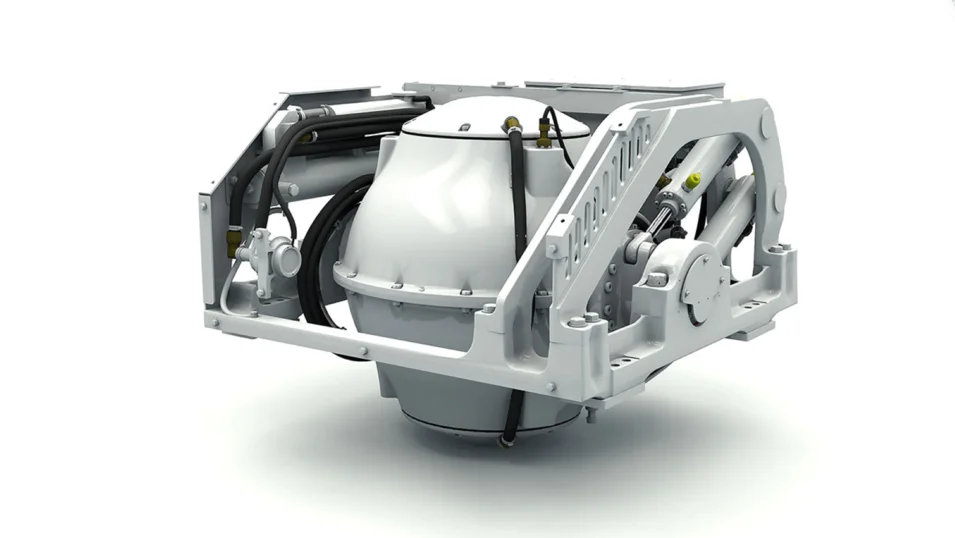
A gyro stabiliser is a self-contained unit that can be installed anywhere inside the hull, not necessarily along the centreline. Its ideal place is the engine room, as there is a steady power source. However, there are small gyros that can be powered by a battery. Although gyros take up some space inside the hull, it is quite reasonable, as they are quite compact.
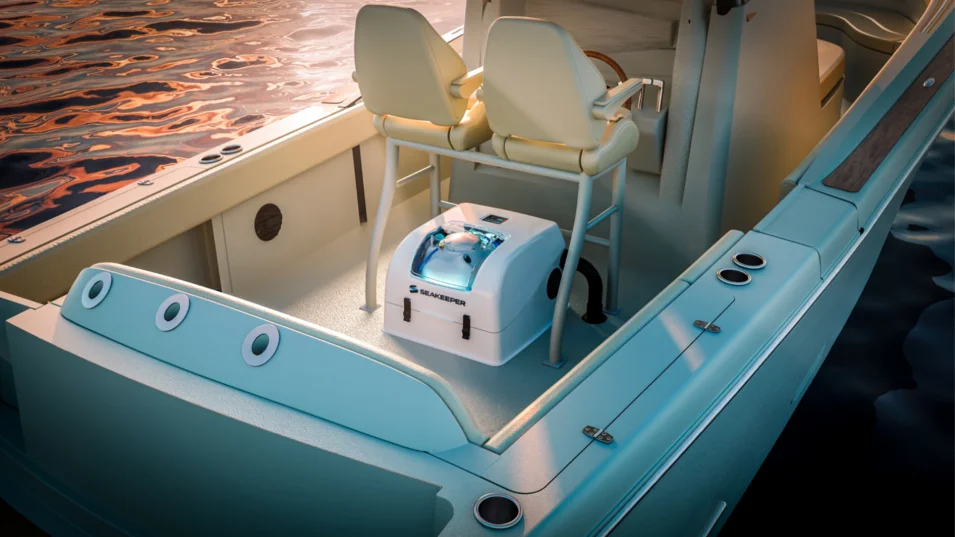
Gyros have just one obvious drawback: they have to be turned on in advance. For example, depending on the model, Seakeeper stabilisers need 20 to 70 minutes to start stabilising.
STRENGTHS:
- Very efficient at anchor
- Suitable both for small and large yachts
- Easy to install
- Several gyro stabilisers can be combined
- They can be located anywhere without compromising the stabilising effect
WEAKNESSES:
- Not as efficient as fin stabilisers underway
- They can’t start working immediately and need some start-up time
Rotary stabilisers
These are not very common for the market in general, but can often be found on the yachts made by Dutch shipyards.
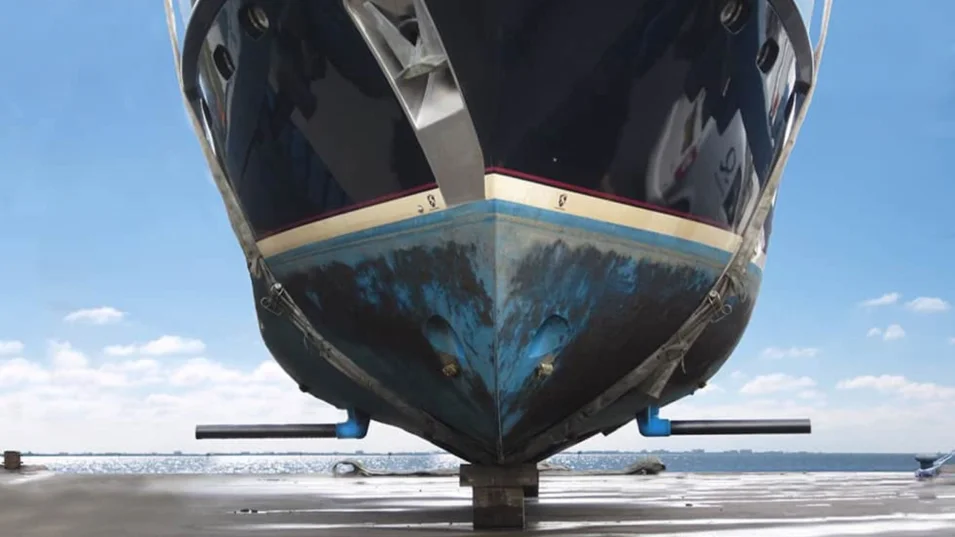
Rotary stabilisers are spinning cylinders located below the waterline at 90 degrees to each side of the yacht. Their work is based on the so-called Magnus effect.
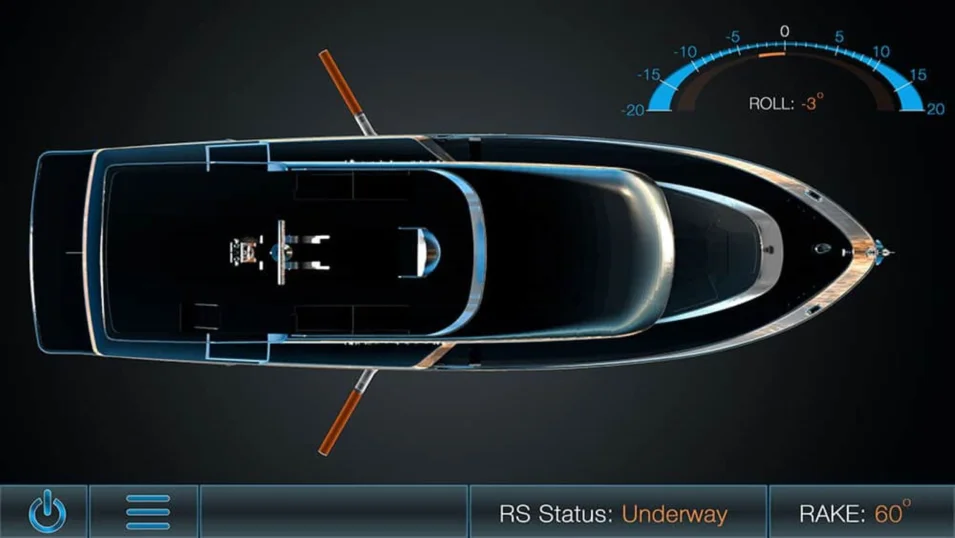
When this kind of cylinder spins in the water, there appears an area of higher pressure on one side, which creates a lift that counteracts the roll. The speed and, therefore, the lifting power can be changed depending on the conditions.
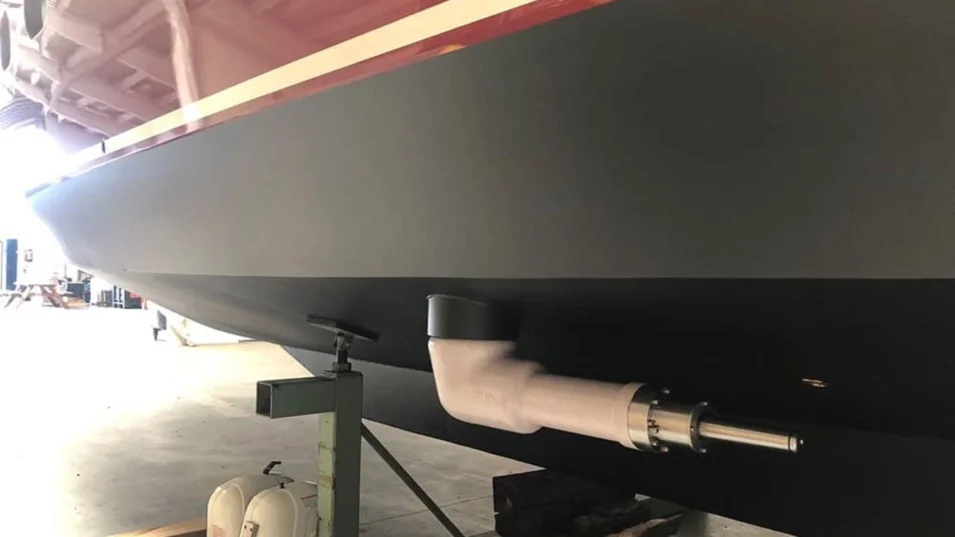
STRENGTHS:
- Easy to install and operate
- Suitable for small boats
- They can be retracted to adjoin the hull
WEAKNESSES:
- They can be installed on slow displacement vessels only
- They work only when the yacht is underway and are useless at anchor
Conclusions:
Yacht stabilisation is necessary not only for comfort on board, but also for safety – both of people and the boat. It may cause injury or even a fall overboard, and seasickness is an unpleasant experience that may put the guests off boating forever. And even if you don’t get seasick, rolling and pitching is tiring, as you have to make an effort to keep your balance, even when you are sitting.
Even if we do not consider extreme cases, when the yacht risks capsizing or being flooded, the harm from pitching is that it accelerates the vessel’s wear. Therefore, on modern motor yachts over 25 meters, it is initially assumed that one or another stabilisation system will be installed. On large motor yachts you can see combinations of different types of stabilisers.
While sailing yachts can do without any stabilisers, at least underway: the long keel and wind pressure on the sails have a powerful stabilising effect. Nevertheless, large and expensive sailing yachts are quite often equipped with stabilisers for comfort at anchor or for long passages under motor. Comfort and safety are worth the money, as people go sailing first and foremost for pleasure.
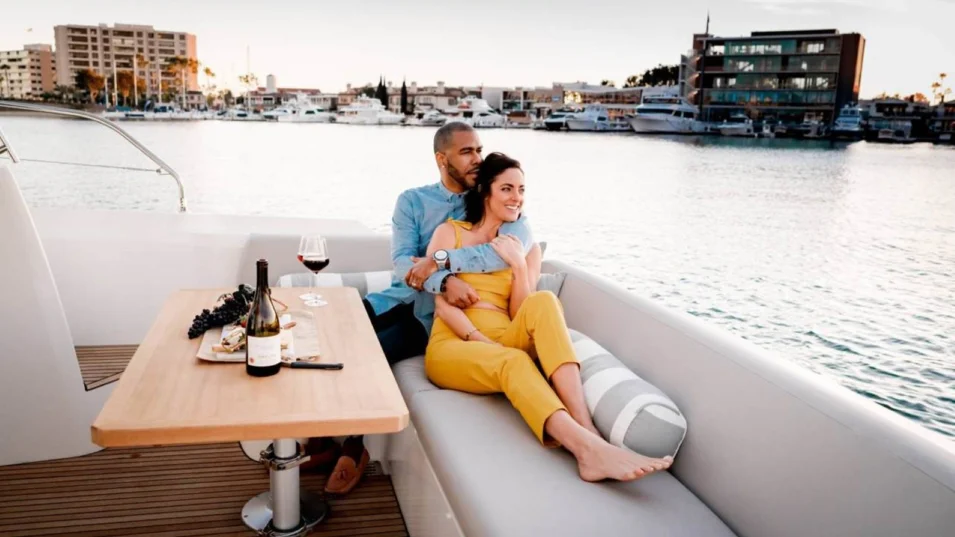
You have successfully subscribed to our newsletter

